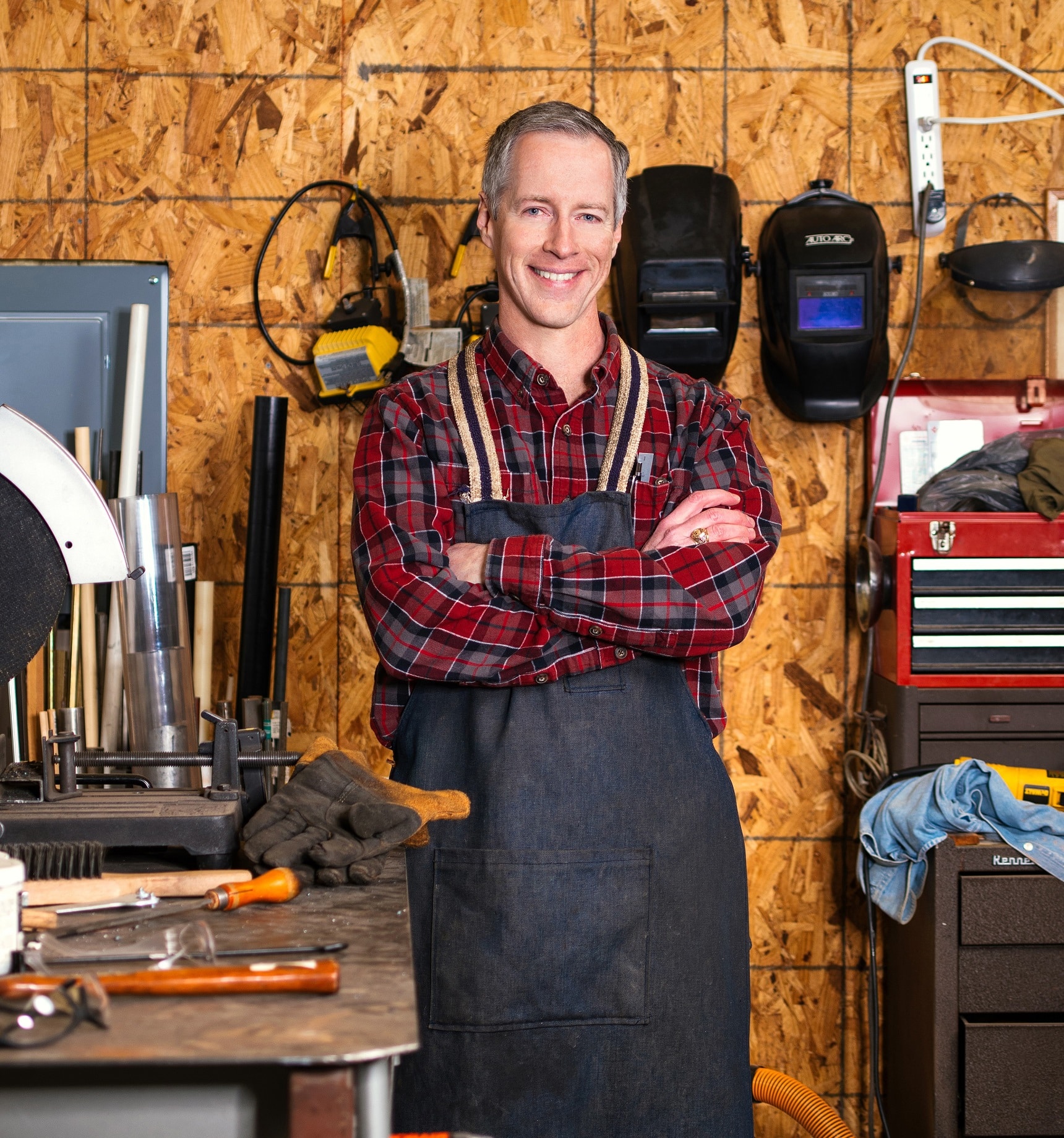PORTRAIT OF DR. MARK BENDEN BY JOSH SMALLER
Speaking for myself and IDSA, we are proud to welcome Mark E. Benden, PhD, CPE, and now IDSA member to the association. Mark is joining me as a subject matter expert in Human Factors and Ergonomics for the Furniture Section.
Mark received his BS in bioengineering, MS in industrial engineering, and PhD from Texas A&M University. He is also a Certified Professional Ergonomist (CPE #706). His career includes experience as an officer, an inventor, a rehabilitation engineer, an ergonomics consultant, a plant & corporate ergonomics engineer, and executive vice president. In addition, his career includes work for organizations from the United States Army Reserve, Johnson & Johnson, Neutral Posture, and Texas A&M University. He currently serves as Executive Director of the Texas A&M Ergonomics Center and is Department Chair for the Environmental & Occupational Health Department within the School of Public Health.
Dr. Benden is the author of many articles, books, and book chapters on ergonomics and has been called upon to speak and lecture to multiple professional groups throughout the United States, Canada, Asia, Europe, the Caribbean, and Central and South America. He has been married to his wife, Teresa, for 33 years and has three sons, three daughters-in-love, and six grandchildren.
David: One of my favorite things about you, Mark, is your hand’s-on approach to design. Can you talk about what that means to you?
3D software drawing packages are amazing, especially after learning on a drafting table with a pencil. Still, I can’t draw some of the things ahead of time that I end up making with epoxy, a chisel, sandpaper, a bandsaw, a welder, or a lathe. So I tell my students and colleagues to challenge their creative mode – it does not have to start with a mouse or a pencil.
All the designs existed first in my head down to the smallest detail. Then, I built them by hand. Finally, once many iterations of the products were made and tested, I created drawings for patents, marketing, etc. I drew all 23 of my patented inventions after I built prototypes.
I love that you didn’t stop there. Tell me about your entrepreneurial side.
Once you get the bug, it is very hard to shake it! I am the founder of three faculty-led startups – PositiveMotion LLC, Stand2Learn LLC, and the Wellbeing Code Inc. and was involved in several other companies as an owner before those recent ones. I have licensed seven different products to four different companies since becoming a faculty member in 2008. Over my 30-year occupational safety and ergonomics career, I have produced multiple processes, tools, and devices to decrease injury and illness risk. Most of those devices are still protected by 23 US Patents, and I have multiple patents pending. Sales of those items carrying patent numbers have totaled over $750 M, and the expected lifetime economic impact of those designs exceeds $2B. Stand2Learn, my most recent startup, was acquired in 2018 by Varidesk (now Vari) after a five-year run-up. More than 1,000,000 children in all 50 states and 32 countries have used my desks, and as CEO, I worked with a great team that enabled the company’s initial profitability with year-over-year growth averaging more than 100%. Awards for the success of Stand2Learn include 2019 VET50 list (#35) & 2018 Inc 5000 (#567) and #5 on the 2018 Aggie 100 (#5).
Any advice for designers who may not be as experienced as you?
Two points of advice, first, enjoy the process, and the accolades will come! The second is, learn anthropometry – understand the size, shape, and complexities of the human form and, when possible, don’t design “one size for all” but something that can “adapt to all.” By the way, there is no such thing as one size fits all.
Try to understand the strengths, weaknesses, and limitations of humans. These vary by person but also by health, age, gender, etc., so design inclusively. To do that, you must be a student of the variety of your consumer target – the easy part is “neck down” (Anthropometry), i.e. the size, shape, and biomechanics of people. Real art comes when you seek to understand and consider the “neck up” part in your design. Not the size of their ears, (ok that matters in earphone designs) but in the cognitive and neuroergonomic capacities of those for whom you design.
